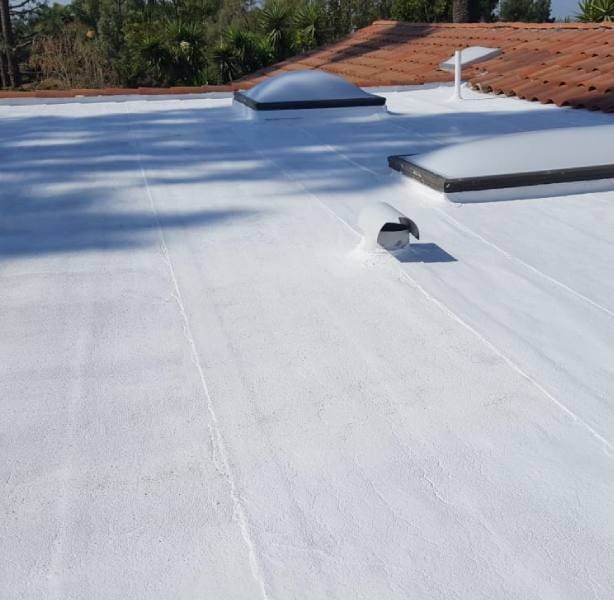Decoding Costs: Understanding the Average Expense of a Commercial Roof Installation
Introduction
When it comes to maintaining a commercial property, one of the most significant investments is often the roof. A well-installed roof not only protects your building but also enhances its overall value. However, understanding the costs associated with a commercial roof installation can be daunting. In this comprehensive guide, we will delve into various aspects of commercial roofing expenses and provide insights into how you can navigate this complex landscape.
Understanding the average expense of a commercial roof installation involves looking at several factors—including materials, labor, location, and more. Whether you're a business owner contemplating a new roof or simply curious about what drives these costs, this article aims to decode those complexities.
Decoding Costs: Understanding the Average Expense of a Commercial Roof Installation
What Influences Commercial Roofing Costs?
Several elements play pivotal roles in determining how much you'll spend on a new commercial roof.
1. Type of Roofing Material
The material you choose significantly impacts your overall costs. Options include:
- TPO (Thermoplastic Olefin): Known for energy efficiency and affordability.
- EPDM (Ethylene Propylene Diene Monomer): A durable rubber membrane often used for flat roofs.
- Metal Roofing: Highly durable but comes with higher upfront costs.
- Built-Up Roofing (BUR): Traditional roofing method using multiple layers—generally cost-effective.
Each material has its benefits and drawbacks, affecting both initial installation costs and long-term maintenance expenses.
2. Size and Complexity of the Roof
Larger roofs naturally incur higher costs due to more material and labor requirements. Complex designs with multiple angles or features like skylights can further increase expenses.
3. Labor Costs
Labor rates vary by region and experience level. Hiring a reputable commercial roofing company might come with a premium price tag, but it often ensures quality work that lasts longer.
4. Geographic Location
Costs can fluctuate based on local market conditions. For instance, urban areas may have higher labor rates compared to rural locations.

5. Building Codes and Permits
Understanding local building codes is essential; non-compliance can lead to fines or additional work later on. Be prepared for permit fees as part of your total expenditure.
Average Cost Breakdown for Commercial Roof Installation
When considering all these factors together, how much should you expect to pay?
Here's an average breakdown:

| Roofing Material | Average Cost per Square Foot | |-----------------|------------------------------| | TPO | $3 - $5 | | EPDM | $4 - $8 | | Metal | $6 - $12 | | BUR | $3 - $6 |
Note: Prices may vary based on specific project requirements.
Benefits of Investing in Quality Roofing
Investing in quality roofing goes beyond just aesthetics; it’s about longevity and reliability.
1. Longevity
A good-quality roof can last 20 years or more if properly maintained.
2. Energy Efficiency
High-quality materials can improve insulation, reducing heating and cooling costs over time.
3. Increased Property Value
A well-maintained roof enhances property appeal for potential buyers or renters.
Choosing the Right Commercial Roofing Company
Finding the right contractor is crucial for ensuring your investment pays off in the long run.
1. Research Reviews and Ratings
Before hiring, check online reviews, testimonials, and ratings on platforms like Google My Business or Yelp to gauge customer satisfaction levels.
2. Verify Credentials
Make sure the company is licensed, insured, and bonded to protect yourself from liability issues during installation.
3. Get Multiple Quotes
Don’t settle for the first quote you receive; gathering multiple estimates helps ensure you’re getting fair pricing for quality work.
Financing Options for Commercial Roof Installation
If upfront costs are concerning, various financing options are available that allow businesses to manage their roofing expenses effectively.
1. Loans from Financial Institutions
Many banks offer loans specifically tailored for commercial property improvements like roofing installations.
2. Financing Through Contractors
Some roofing companies provide financing plans that enable you to pay over time rather than paying upfront all at once.
Maintenance Costs After Installation
Once your new roof is installed, don't forget about ongoing maintenance!
1. Regular Inspections
Annual inspections can help identify problems before they become costly repairs down the road.
2. Cleaning Debris Regularly
Keeping your roof clear reduces wear-and-tear caused by fallen leaves or branches that trap moisture against the surface.
FAQs
Q1: How long does a commercial roof installation take?
A: The timeline varies by project size and complexity but typically ranges from a few days to several weeks depending on weather conditions and material availability.
Q2: Can I install a new roof over my existing one?
A: In some cases yes; however, it's best practice to consult with your roofing contractor as this may depend on local codes as well as structural integrity concerns related to weight-bearing capacity of existing roofs.
Q3: What warranties come with commercial roofs?
A: Warranties often range between 10 to 30 years depending on materials used—always ask your contractor for details regarding coverage specifics!
Q4: Are there any tax deductions available for commercial roofing installations?
A: Yes! Depending on jurisdictional laws—and if certain criteria are met—businesses may qualify for tax deductions related directly towards energy-efficient upgrades made during renovations such as installing high-efficiency roofs!
Q5: Do I need permits before starting my roofing project?
A: Yes! Most localities require permits before beginning construction projects—check with local zoning departments beforehand!
Q6: What happens if my new roof leaks after installation?
A: Contact your contractor immediately! Many reputable companies will offer warranties covering leaks resulting from faulty workmanship within specified timelines post-installation.
Conclusion
In summary, understanding "Decoding Costs: Understanding the Average Expense of a Commercial Roof Installation" requires careful consideration of various factors such as materials used, labor involved, geographic location pricing differences among contractors available—the whole nine yards!

Moreover investing wisely while choosing reliable professionals ensures longevity & protects assets through enhanced property values down-the-line—all while keeping future maintenance manageable! So go ahead—take Go to this website that leap into making informed decisions regarding one critical aspect every successful business needs—a solid rooftop over their heads!